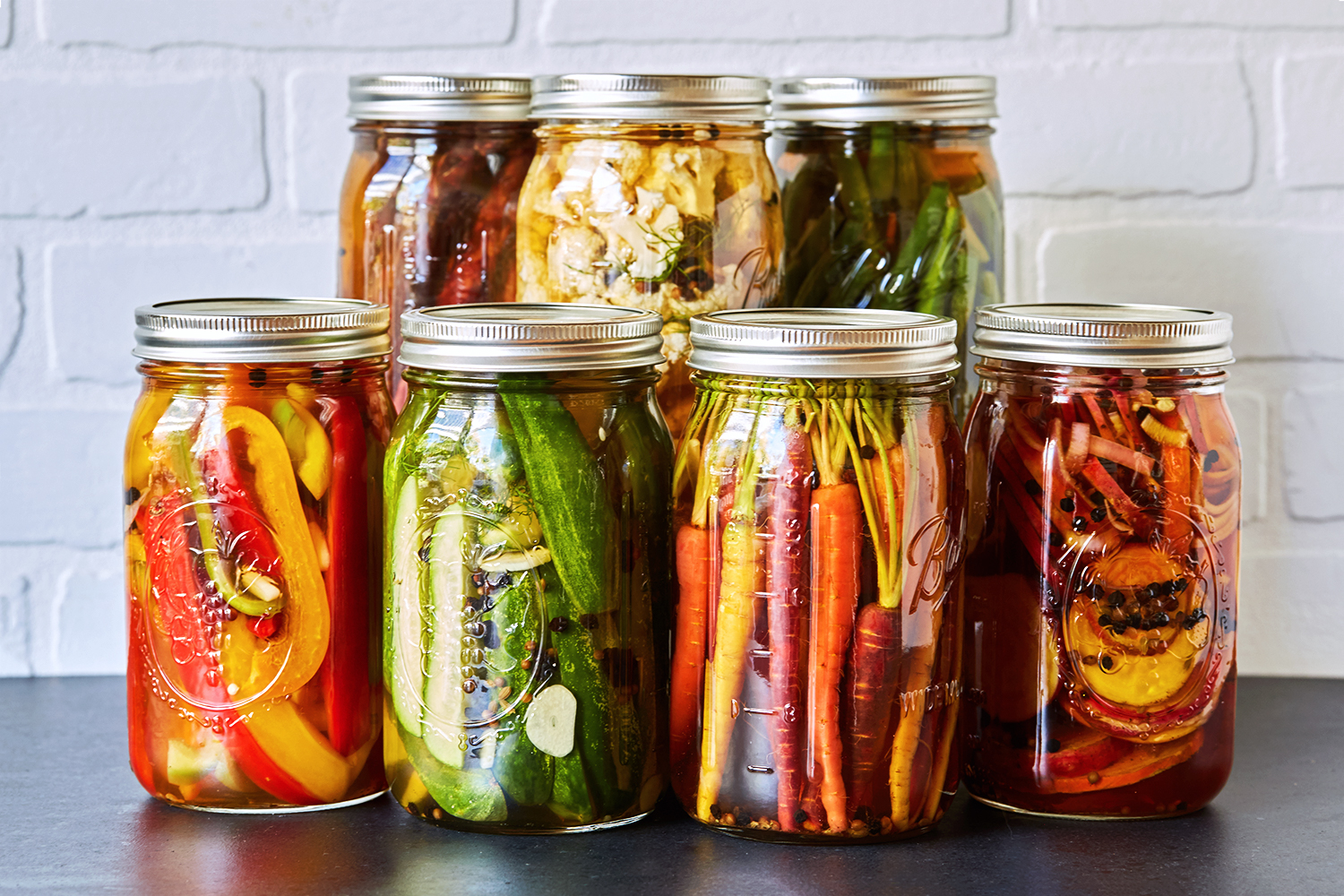How to Pickle Vegetables

A jar full of sour, salty, crisp pickles is one of the greatest joys of summertime for many people. If you’re among the pickle lovers, Here’s what you need to know to turn that backyard garden bounty or farmer’s market haul into rows of colorful jars. You’ve likely already dreamed of creating your very own pickled inventions. There are a few minor safety hazards that can deter some from attempting this kitchen hobby. However, it’s easy to overcome the risks just by understanding them. If you’re only a fan of the occasional pickle that has a certain flavor profile or texture, you stand to gain even more by being able to control the outcome of the recipe.
How to Safely Pickle

Pickling is one of the safer forms of home food preservation thanks to the bacteria-stopping power of salt and vinegar. This means you can’t really reduce the salt or vinegar level of a pickle recipe without making it a short-term dish. If you’re willing to eat up all the vegetables you pickle within a few days and will keep them refrigerated, you can experiment with practically any level of vinegar and salt. For refrigerator-stored pickles you want to last up to two weeks, you’ll need to follow an established ratio at least. Canned pickles designed to sit on the shelf at room temperature before opening need a specific level of vinegar and salt to remain safe to eat.
Quick Pickle

Quick pickles are designed to stay refrigerated at all times. They have a lifespan of anywhere from two days to two weeks, depending on how much salt and vinegar you use in the brine. In general, you need a 50:50 ratio of vinegar to water for pickles to last a week or more. If you use more water than vinegar, keep the pickles for three days or less. Add at least one tablespoon of salt per pound of vegetables pickled as well. Make sure the vinegar has an acetic acid level of 5%, the standard strength for most products sold for kitchen use. Flavored vinegar is fine to use if it has the same level of acidity. Quick pickles develop the best flavor after soaking in the brine for at least two to three days but then tend to become mushy as the two-week mark approaches.
Proper Pickling

Since quick pickles don’t require any heat during the process, they stay crisper. But if you want your pickles to last into the winter or want to store them on the shelf, you’ll need to can them properly with a water bath canner. This process requires specific steps and equipment that can’t all be covered here. The brine requirements are the same, with around a 50:50 ratio of vinegar to water required in most recipes. Salt levels are often slightly higher for canned pickles, but low-salt recipes have been developed by resources like the National Center for Home Food Preservation. It’s important to add firming agents like calcium chloride or calcium hydroxide if you want pickles as firm as unheated quick pickles.
Lacto-Fermented Pickles

The most complex process for pickling a vegetable relies on lactic acid bacteria. Water and salt are all that are added to the cucumbers, while bacteria move in to create a sour flavor and to preserve the vegetables for a few weeks when refrigerated. Learning to make Lacto-fermented pickles requires a completely different skill set and equipment than canning or making refrigerator quick pickles.
The Best Vegetables to Pickle

A surprising range of vegetables are tasty when quick-pickled, and most of them can hold up to canning if handled with care. Peppers are a good place to start since they can be roasted for a sweeter taste or kept raw for a crisp garnish. Tomato pickles can be made with nearly ripe but still firm fruits or with green tomatoes to make chutney at the end of the season. Cauliflower is strong enough to hold up to canning, but broccoli is not recommended due to its concentrated flavor. Carrots and other root vegetables like radishes, beets, and salsify all make for good choices as well. Fennel has a milder and more palatable flavor when pickled with salt and sugar, while asparagus becomes an expensive luxury once pickled. Explore the aisles of fancy pickles and relishes at the local grocery store to get ideas. If you can’t find home canning recipes for some vegetables or brines, you can likely still replicate them as quick pickles.
When to Plan for Pickling

Pickling season usually begins in mid-summer as cucumbers, tomatoes, and other popular vegetables start ripening in bulk. Using out-of-season vegetables grown in the hothouse isn’t recommended because they don’t tend to hold their texture well or absorb the brine. Look for pickling varieties of cucumbers, in particular, to get the best results from your finished project. Canning supplies, pickling salt, and even vinegar can become scarce during early autumn, which is the height of pickling season. Try to shop early and pick up spices like dill seed and whole peppercorns all year round to stock up.
Necessary and Useful Pickling Supplies

No matter how you pickle, a few essential supplies make the process easier. First, a mandolin or food processor with cutting blades can significantly speed up the preparations. Funnels are recommended, along with silicone-tipped tongs, to help you get vegetables and brine into the jars. This is helpful whether you’re using jars to store quick pickles or plan to can. Finally, try using a digital kitchen scale rather than measuring cups to weigh out everything for better accuracy.
With some practice, your pickles may begin winning blue ribbons at the local fair. Even if they just stay in your kitchen, tasty homemade pickles are a great trick to have up your culinary sleeve.





